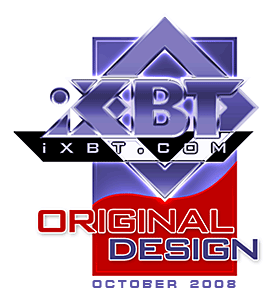ATI RADEON HD 4670 512MB Graphics Card
|
Company Of Heroes Opposing Fronts
3DMark Vantage Graphics MARKS
Devil May Cry 4 (Scene 1)
Devil May Cry 4 (Scene 4)
Conclusions
Almost all tests show that RADEON HD 4670 is stunningly successful! For the first time we see a graphics card priced less than $80 -- just 10 bucks more than 9500 GT, but radically better! It has all the previous architectural problems solved: antialiasing caused too much of a performance drop in such cards to be usable, but now this feature can be enabled in many games even at 1280x1024! Could you do it before with an 80-dollar graphics card?
Now we'd like to say a few words about a comparison with GeForce 9600GSO, the next more powerful competitor (it stands above 9500 GT). We understand, of course, that NVIDIA will try to cut down prices for these cards to oppose them to RADEON 4670. It will certainly involve rebates. But selling 9600 GSO cards for $80 means no profits or even losses (even though the card uses a 192-bit bus, its PCB comes from an expensive 256-bit version; plus an expensive G92 GPU). And 4670 still has a price-cut reserves (it's cheap to manufacture). 9800 GTX can't catch up with 4850 in price (in Russia, of course), and with GeForce 9600GSO it will be the same. So we can compare the reviewed card with 9600 GSO only with great reservations. If you have a look at the charts, 9600 GSO is not much faster. But it's longer, it requires additional power source, while 4670 can be easily installed into a small PC enclosure.
We'd like to congratulate AMD with a successful budget product intended for those who are pressed for money, but still willing to play 3D games. You should keep tabs on prices though. Because if there's only a small difference between 9600 GT/RADEON 3870 and the current budget solutions, you may consider buying something more powerful and just slightly more expensive to get much better performance in games.
Afterword
A few words about our benchmarks.
In our updated FRAPS review we have illustrated how crude and inaccurate tests with this utility are. Testers do not have other tools, except for benchmarks built into games.
This article and its first part explain that it's sometimes possible to test games with integrated and identically looped demos. Although this implies lots of potential errors, since measurement accuracy depends on a given tester: whether he starts/stops FRAPS in time or does it too late/early.
But I have run across situations, when demo load changes abruptly in the very beginning or end. So a half-second delay in starting/stopping the utility changes the average FPS by 15-20%. That's not a measurement error anymore - such a test is a total waste of time. One time you delay the test, another time you start it too early (not intentionally, of course), and you end up with absolutely different performance results.
But even that's not the most important thing. The fact is, there are almost no games with built-in demos anymore. So, testers are forced to use a method that we deem totally unacceptable. They measure gaming performance by walking a straight line from the a starting point in a scene to a selected destination (the nearest fence, tree, etc.).
We all understand that it's impossible to navigate to a finish spot in precisely the same route with different cards and in different resolutions. Besides, such games always introduce random elements into a scene, and objects may be placed slightly differently on the same scene.
Unfortunately, websites that publish a huge number of tests do not always reveal their test methods for each game (except for those with built-in benchmarks).
So, we believe that it's better to offer a limited number of game tests, but each will be crystal clear, accurate and showing actual differences between graphics cards.
We rarely award reference products, but RADEON HD 4670 is so successful that we have decided to give it the Original Design award:
We express gratitude to AMD for provided graphics cards.
PSU provided by TAGAN, monitor provided by NVIDIA.
Write a comment below. No registration needed!
|
|
 |
Article navigation:
Page 1: Introduction, specifications
Page 2: Architecture, supported technologies
Page 3: Graphics card, cooling
Page 4: Synthetic tests, part 1
Page 5: Synthetic tests, part 2
Page 6: Synthetic tests, part 3
Page 7: Synthetic tests, part 4
Page 8: Synthetic tests, part 5
Page 9: Game tests, part 1
Page 10: Game tests, part 2; conclusions
|
|
|





